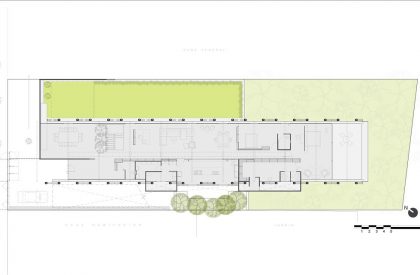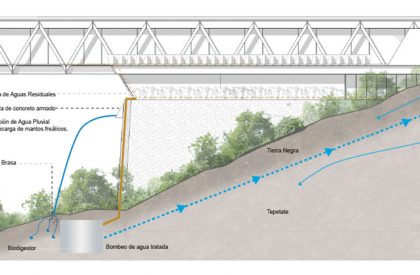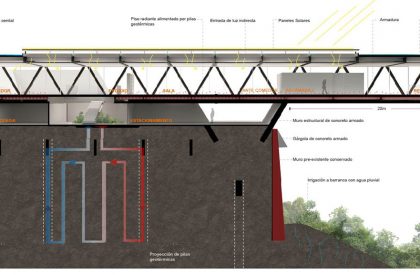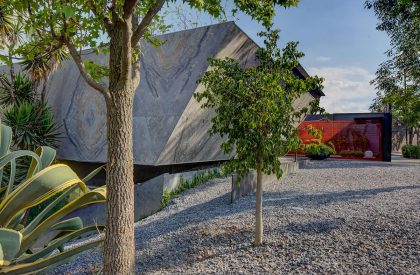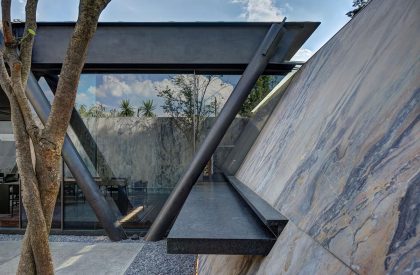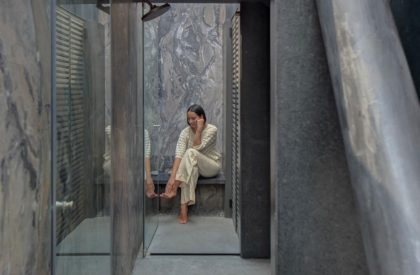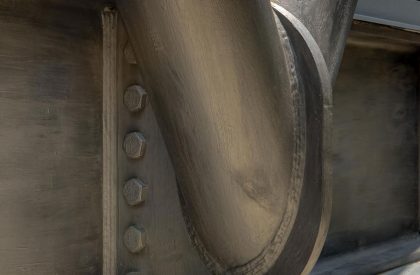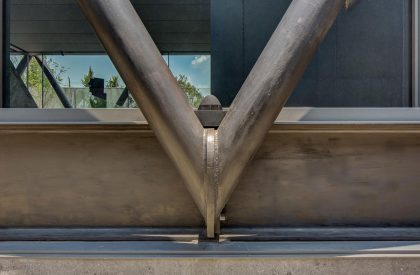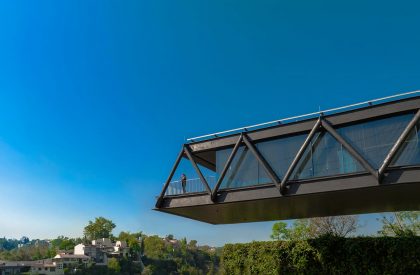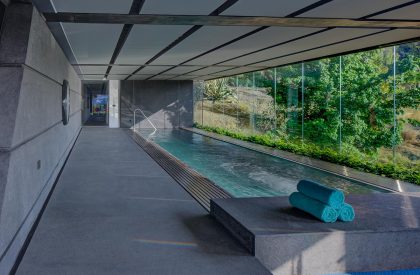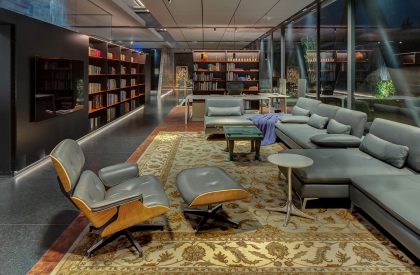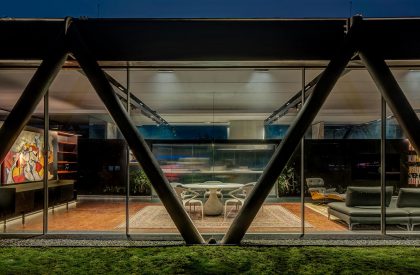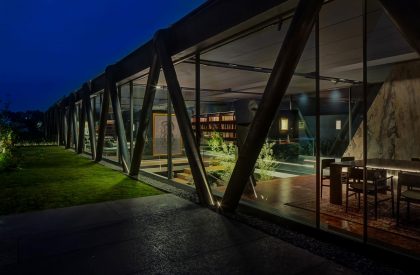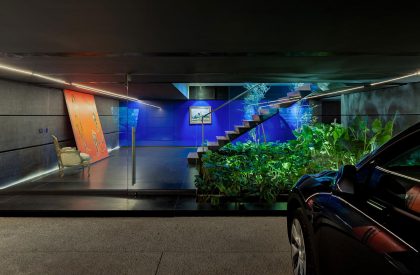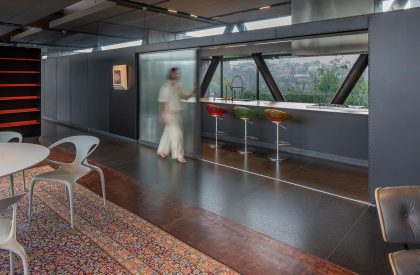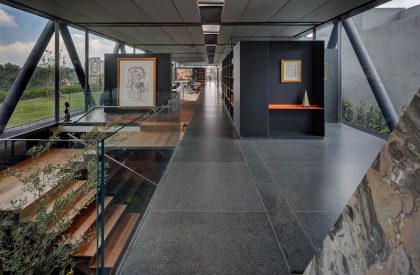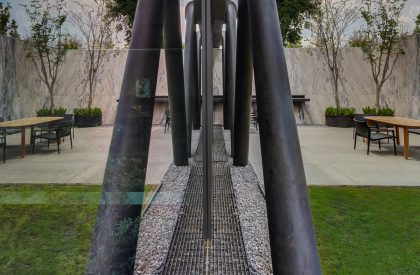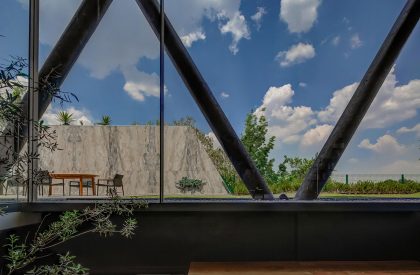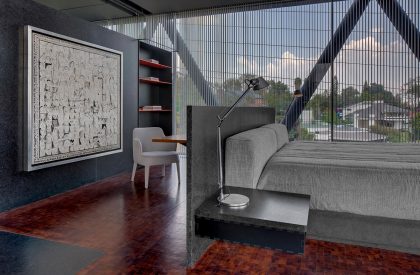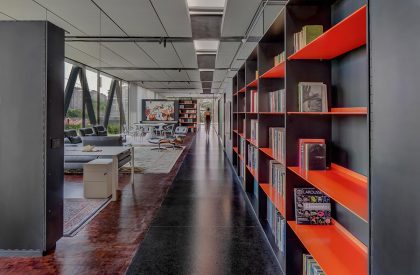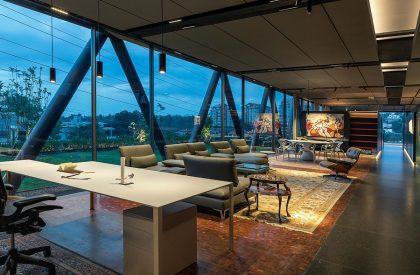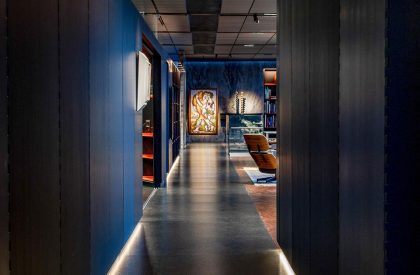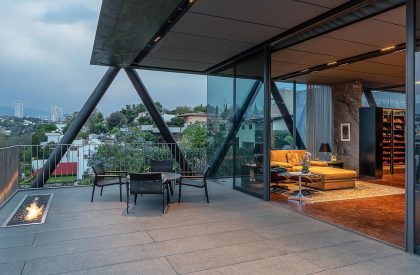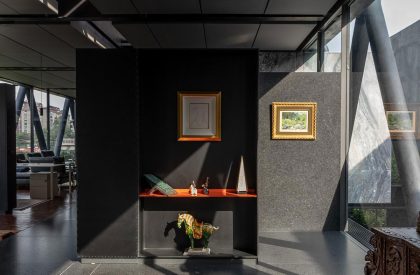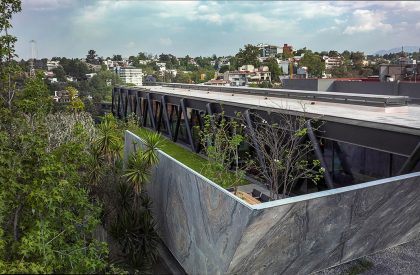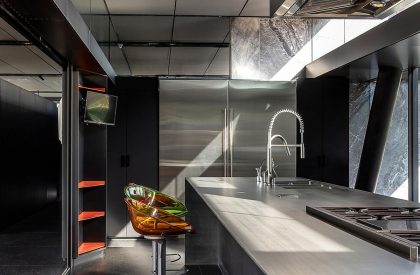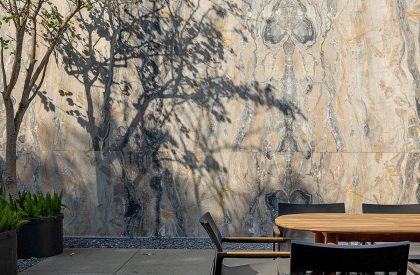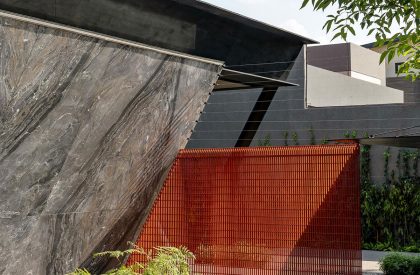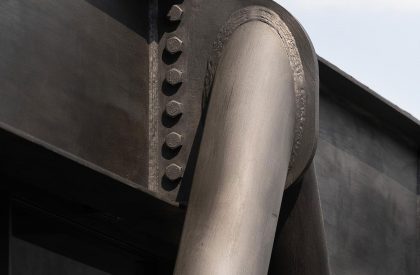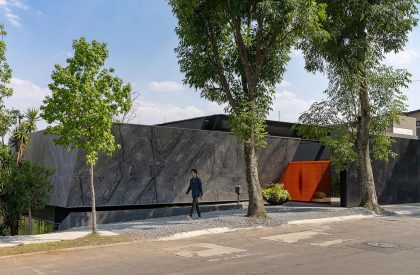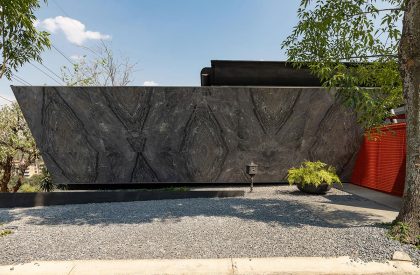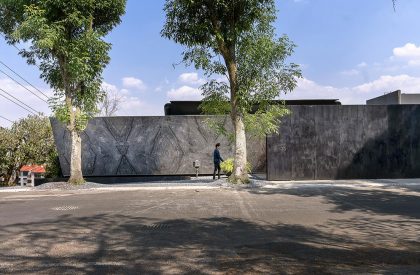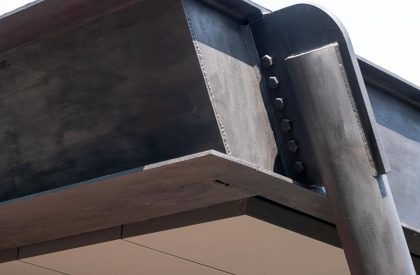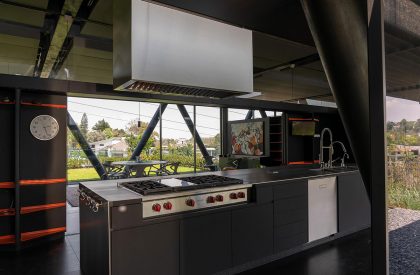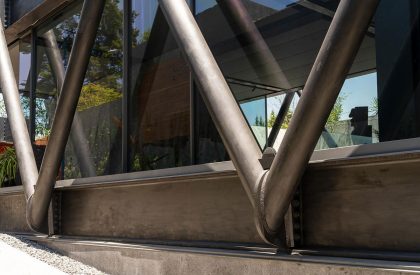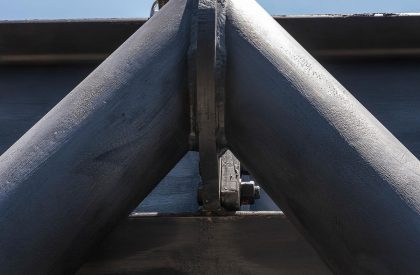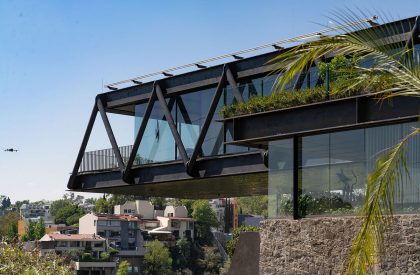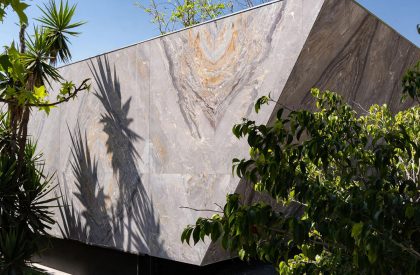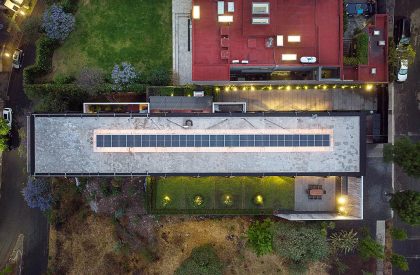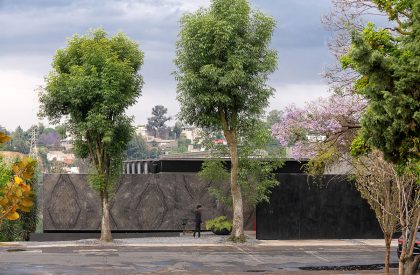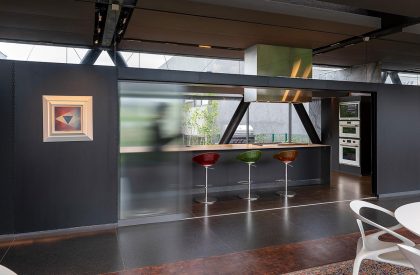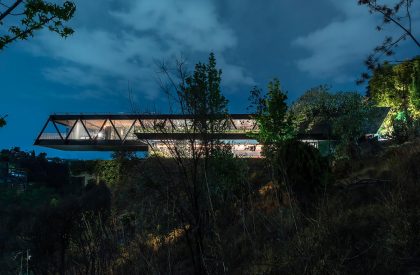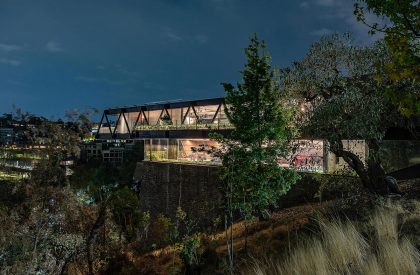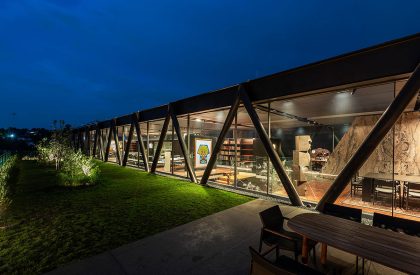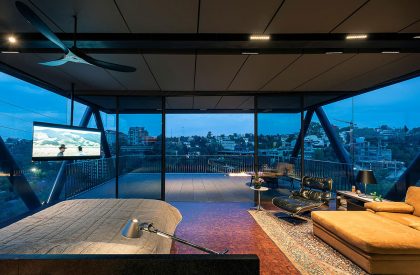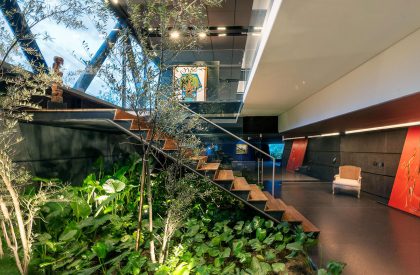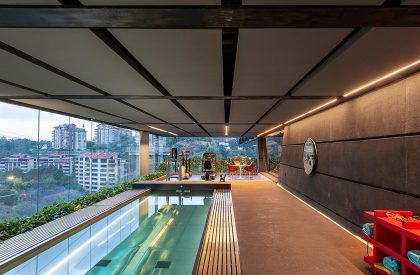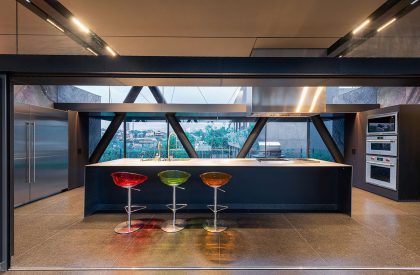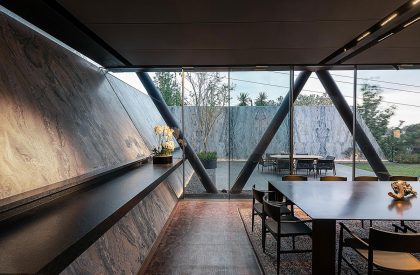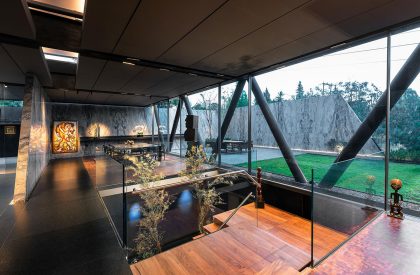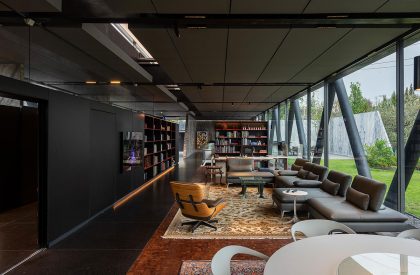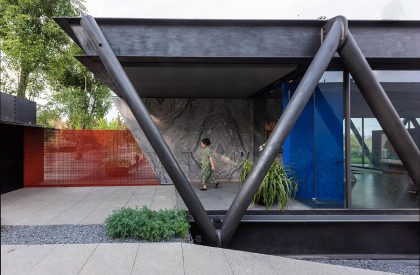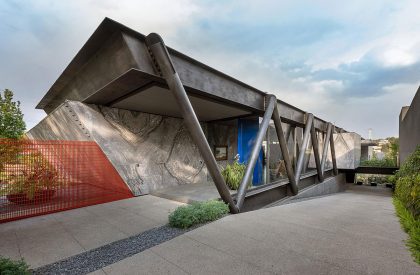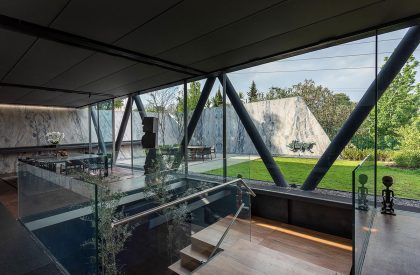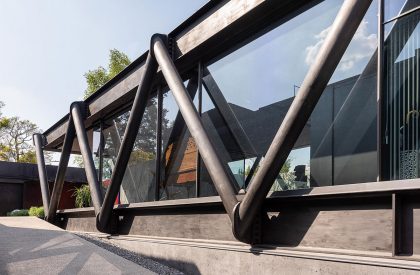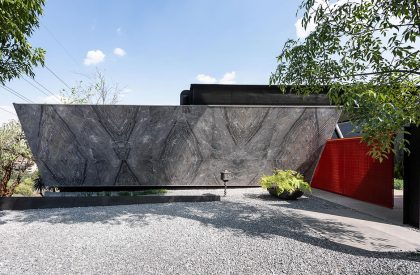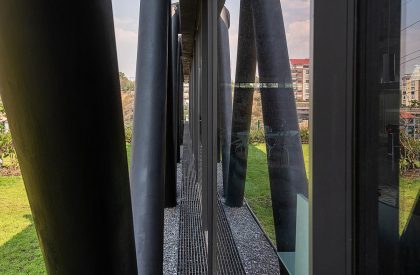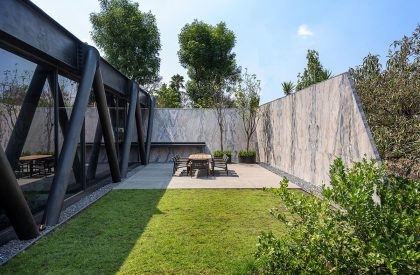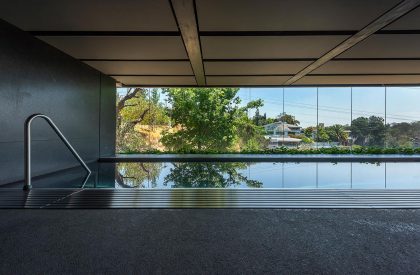Excerpt: CH73 Cantilevered House, designed by LBR&A, is a self-sustainable designed structure having adequate orientation, ventilation, and protection towards the environment. The designed house characterises a calm and diaphanous interior spatiality, surrounded by light, and natural air, with open and protected visuals, with a great quality of indoor life.
Project Description
[Text as submitted by architect] The residential area of Bosques de las Lomas in Mexico City is a neighborhood conceived within a wooded area. Its clumsy architectural development has deforested the site, transforming the forest into rooftops and landscaped concrete platforms that drain rainwater into the municipal system, reducing the infiltration of water into the subsoil, and destroying the original flora and fauna of the site.

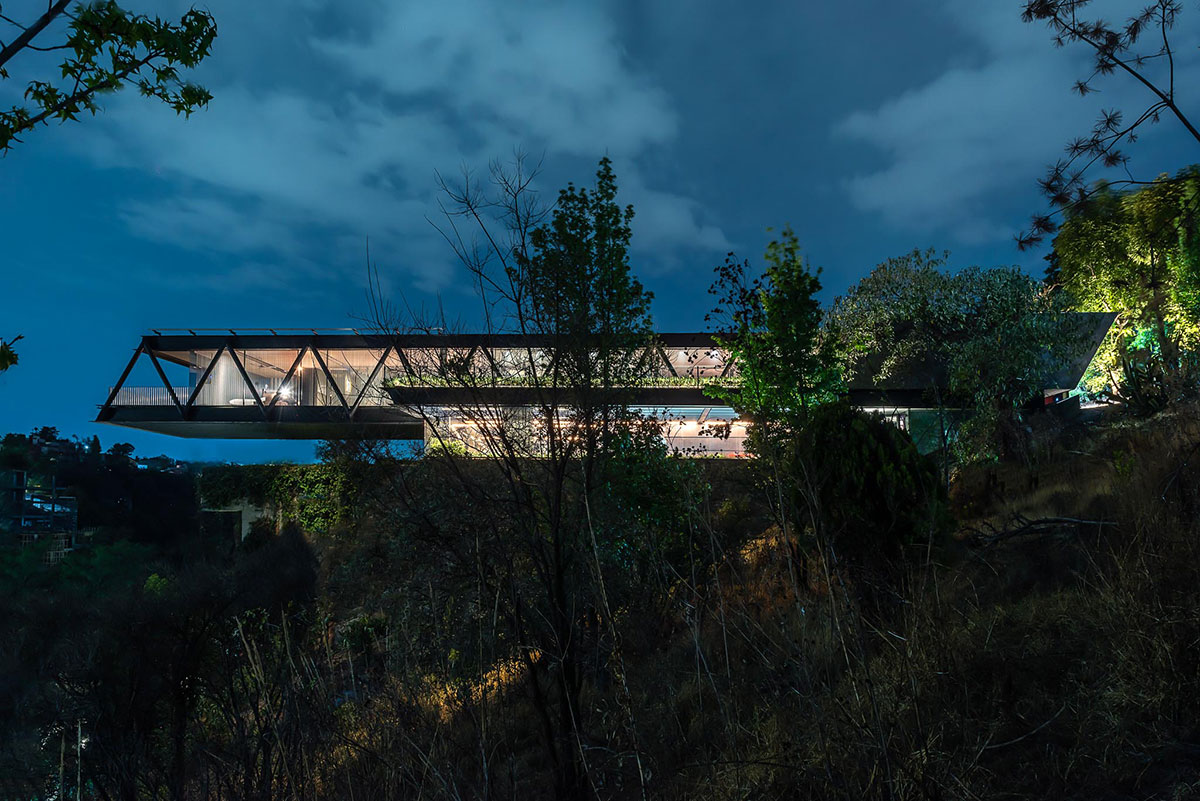
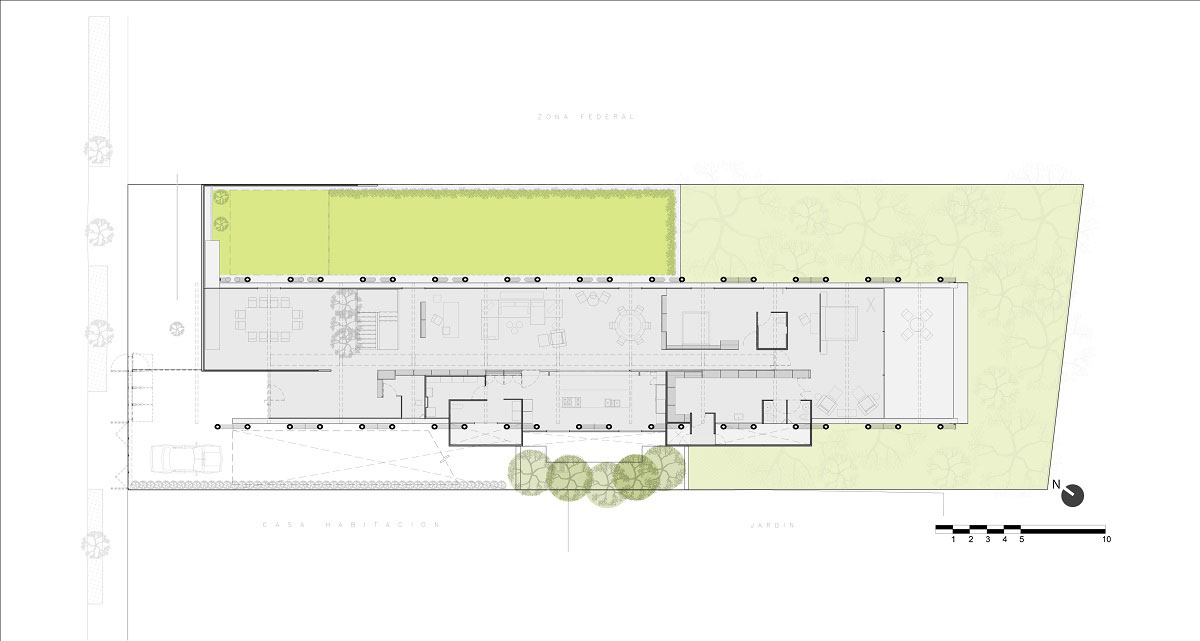
Within this context, the CH73 House is born as a self-sustainable proposal that breaks the imposed paradigms of construction in the area. The presence of a federal reserve to the east, the pre-existence of a retaining wall, and the adherence to the regulations and the project program itself, helped us to make the decision on the architectural design of CH73, conceptualizing it as a diaphanous file in cantilever, surrounded by interesting current and future visuals (when the implemented ecological actions mature), with a clear division of the served space with the server space.


CH73 has a total area of 1023 square meters. The structural design of the house is resolved from a steel frame that frees a cantilever of 20 meters over the ravine to take advantage of the entire terrain and comply with the regulations established in the area. This characteristic of the terrain drove LBR&A’s passive bioclimatic architecture strategies.


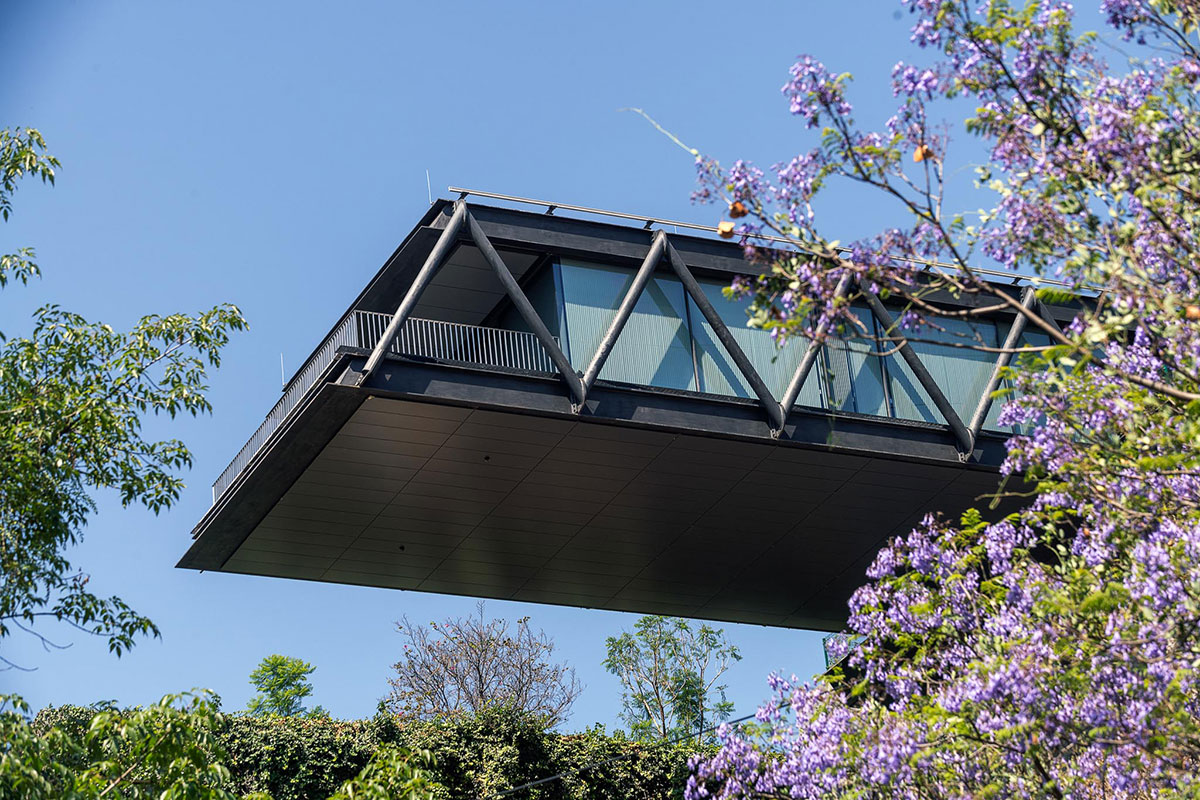
Our traditional holistic way of working led us to the understanding of projecting an architectural-structural piece, with protected and ventilated facades, with resources in terms of conservation and energy generation and with a water and ecological conscience towards the environment. All this proposes a calm and diaphanous interior spatiality (programmatic requirements of the project), surrounded by light, and natural air, with open and protected visuals, with a great quality of life inside.

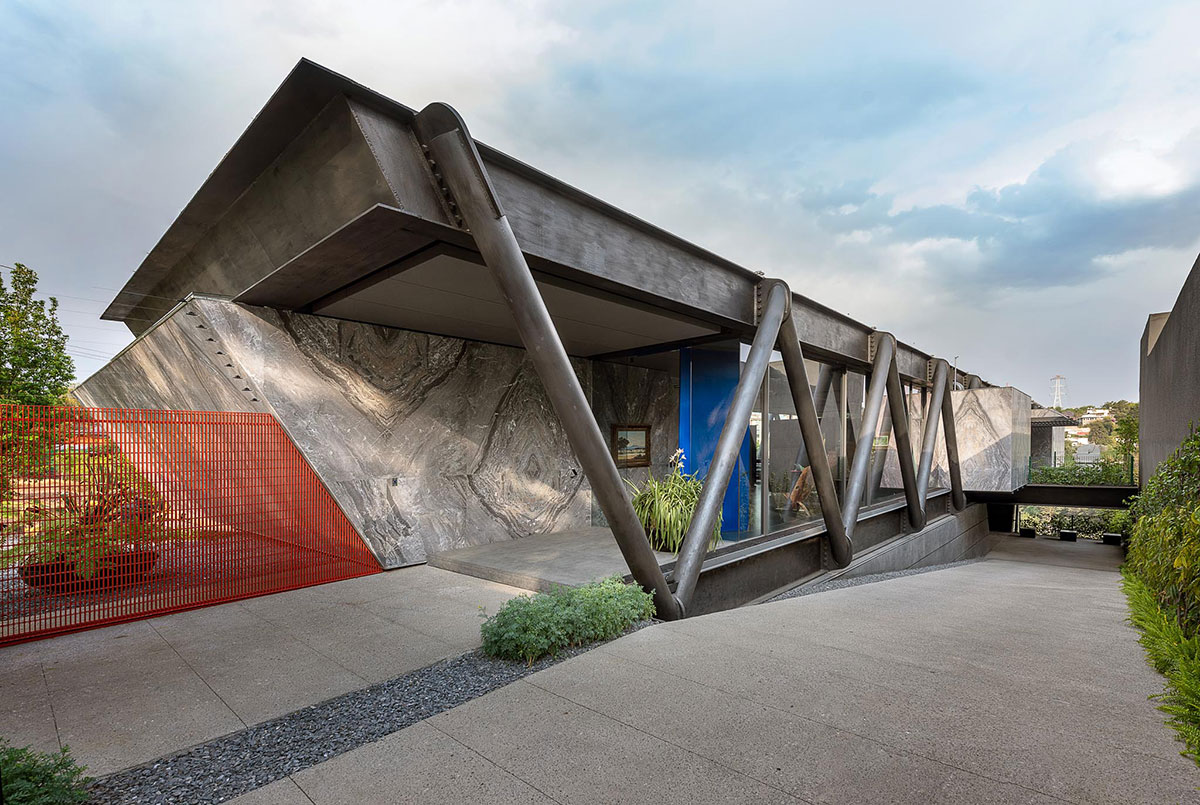
The Net-Zero factor was achieved by the combined use of the piles supported by a heat pump (solar powered), by the adequate orientation, ventilation, and protection towards the environment, as well as by the adequate materiality of the construction. In terms of water, a biodigester system was installed to treat wastewater and irrigate the federal zone, as well as send rainwater to the subsoil to improve the flora and fauna conditions of the battered forest area.

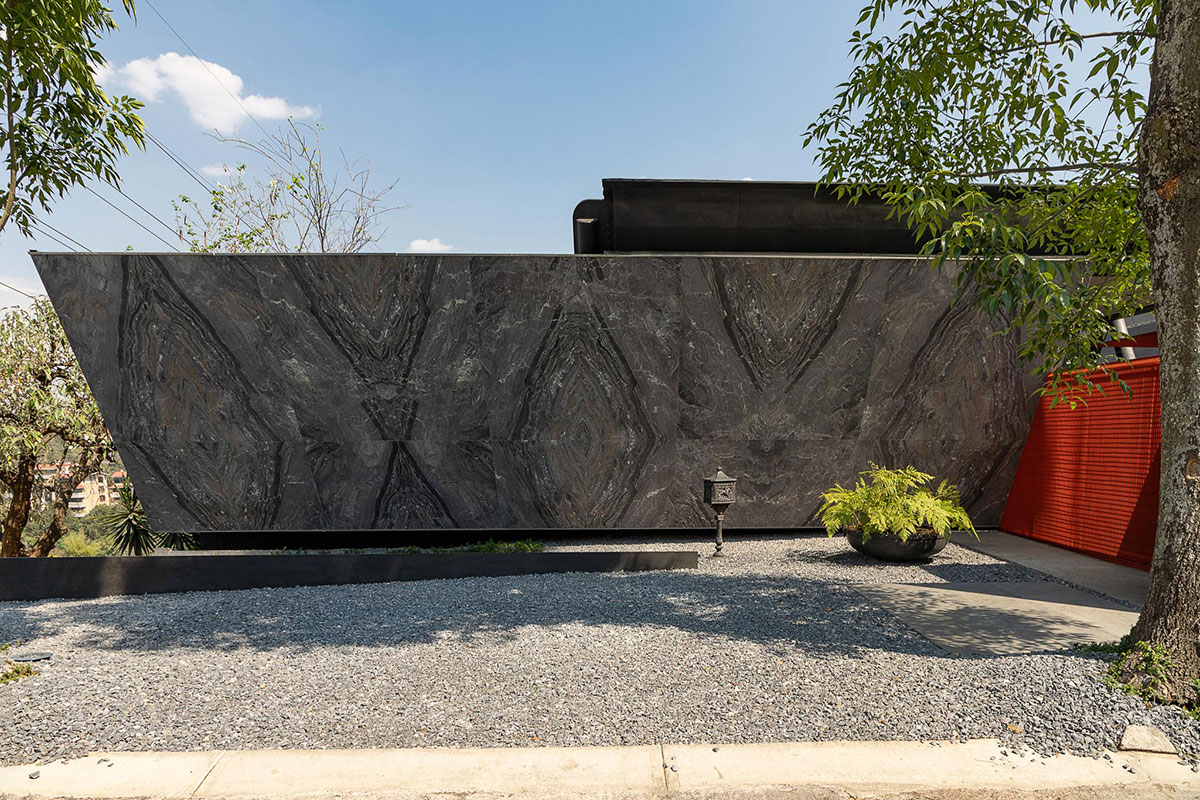
The reinforcement rests on three black concrete load-bearing walls that make up the basement, which is founded on geothermal piles that are used to generate resource savings. In fact, the piles contribute to heating the house in winter and preheating the pool the rest of the year with the support of a heat pump. The visuals that are generated are towards the ravines, while the spaces have a flexibility of use, which can be easily adapted to the changes or needs of the clients.
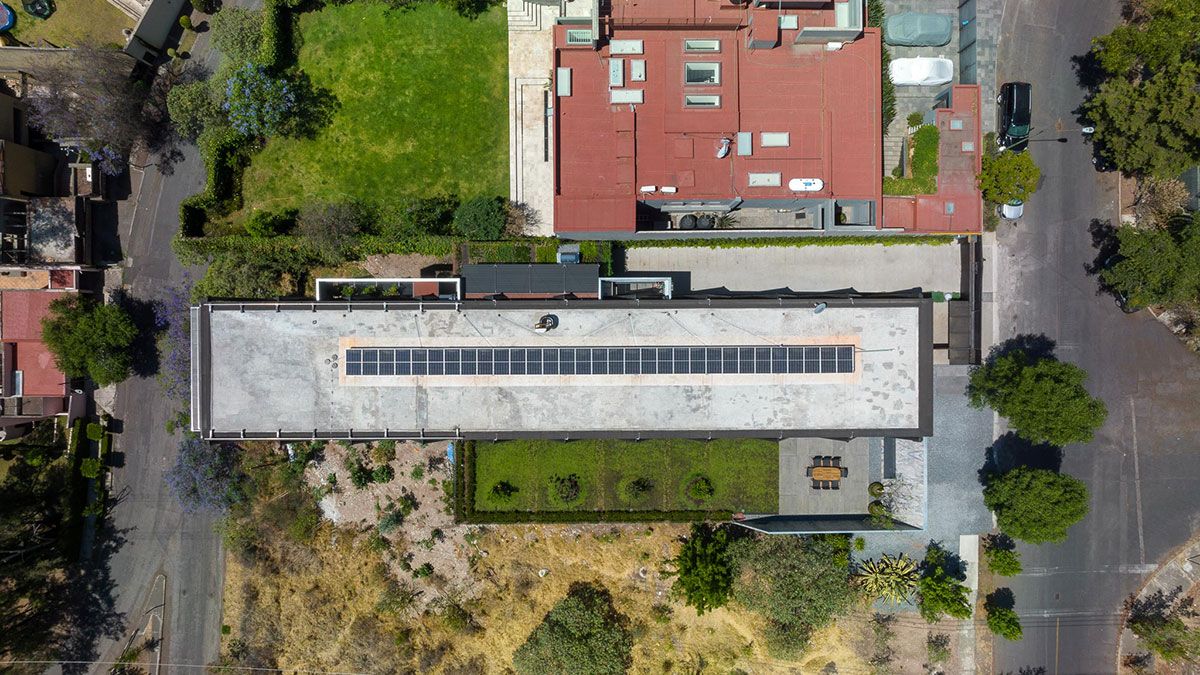
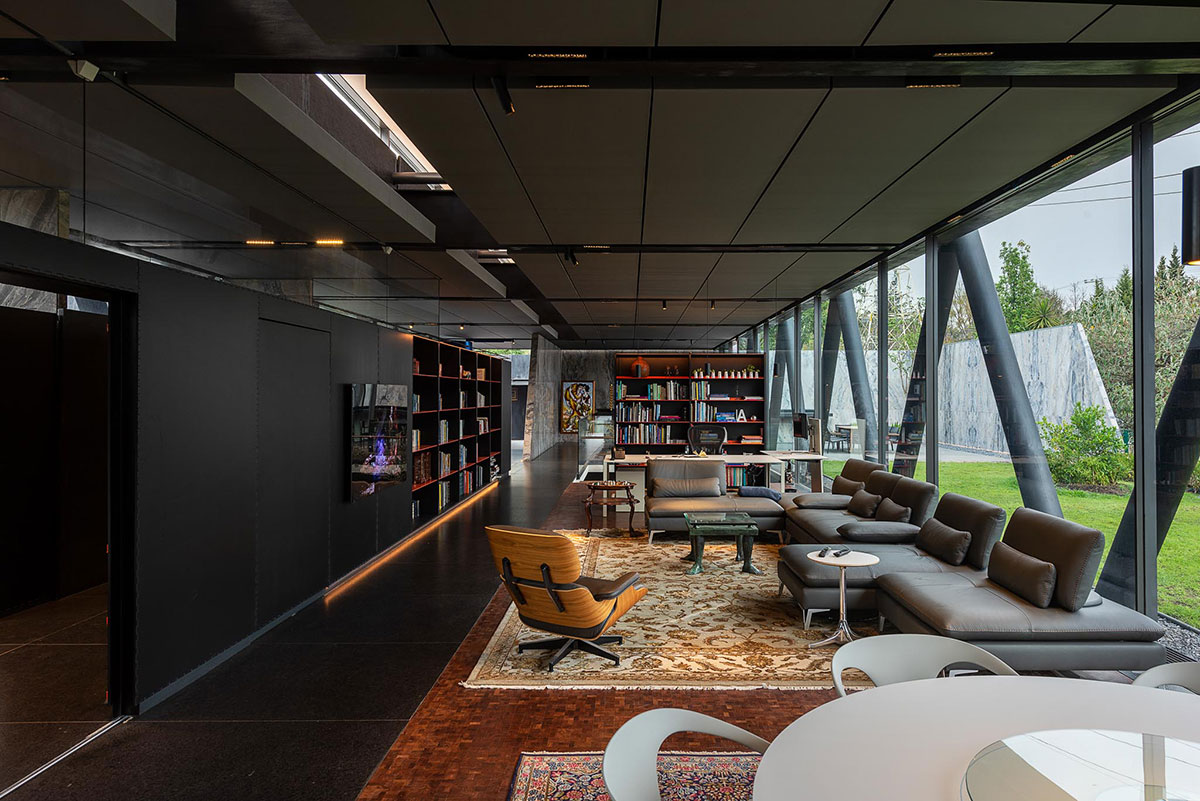
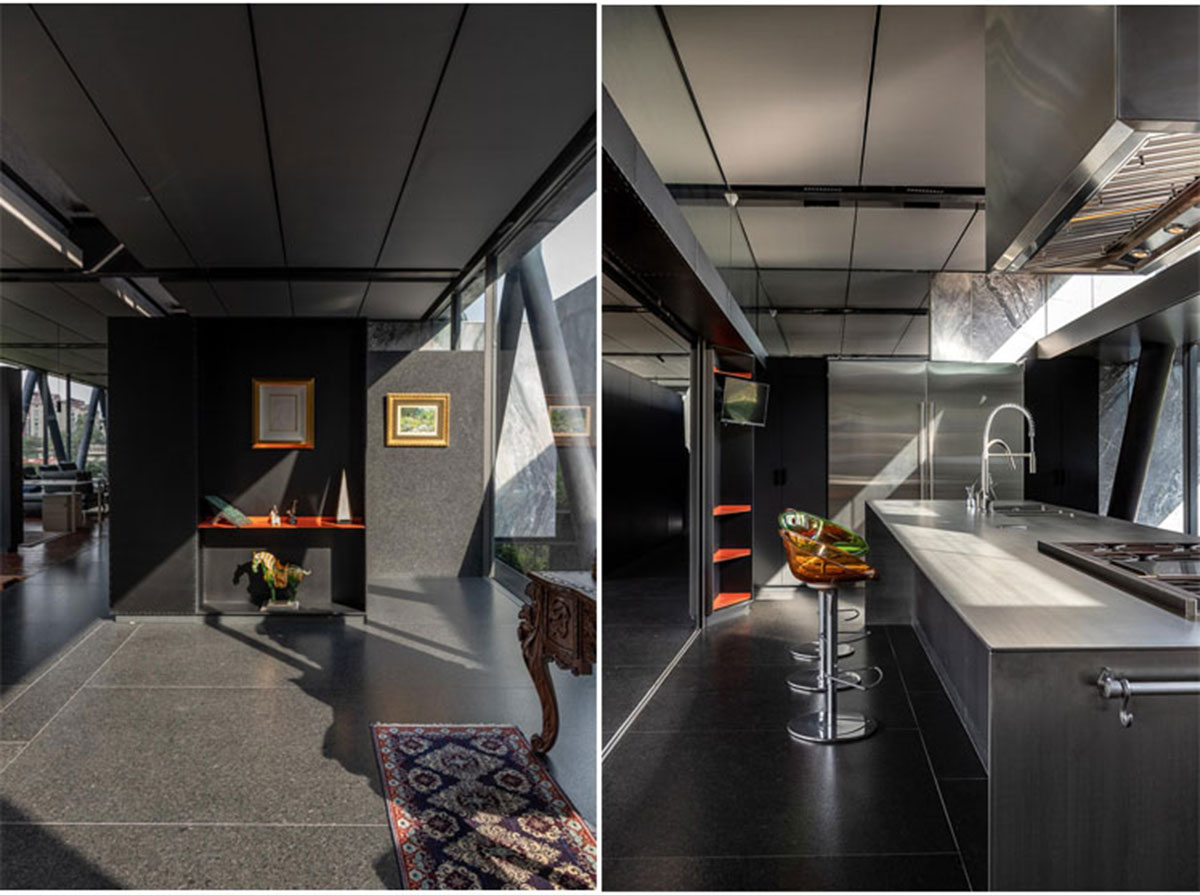
As part of the reforestation, it was decided to plant endemic species such as Tepozán, Pino Moctezuma (Ocote), and Aguacateros trees (specific for the fauna), in addition to other trees that had grown naturally on the pre-existing and abandoned platform of the property. We were very excited to learn that a Cacomixtle (an endangered species) was found a few days ago in the federal zone.

